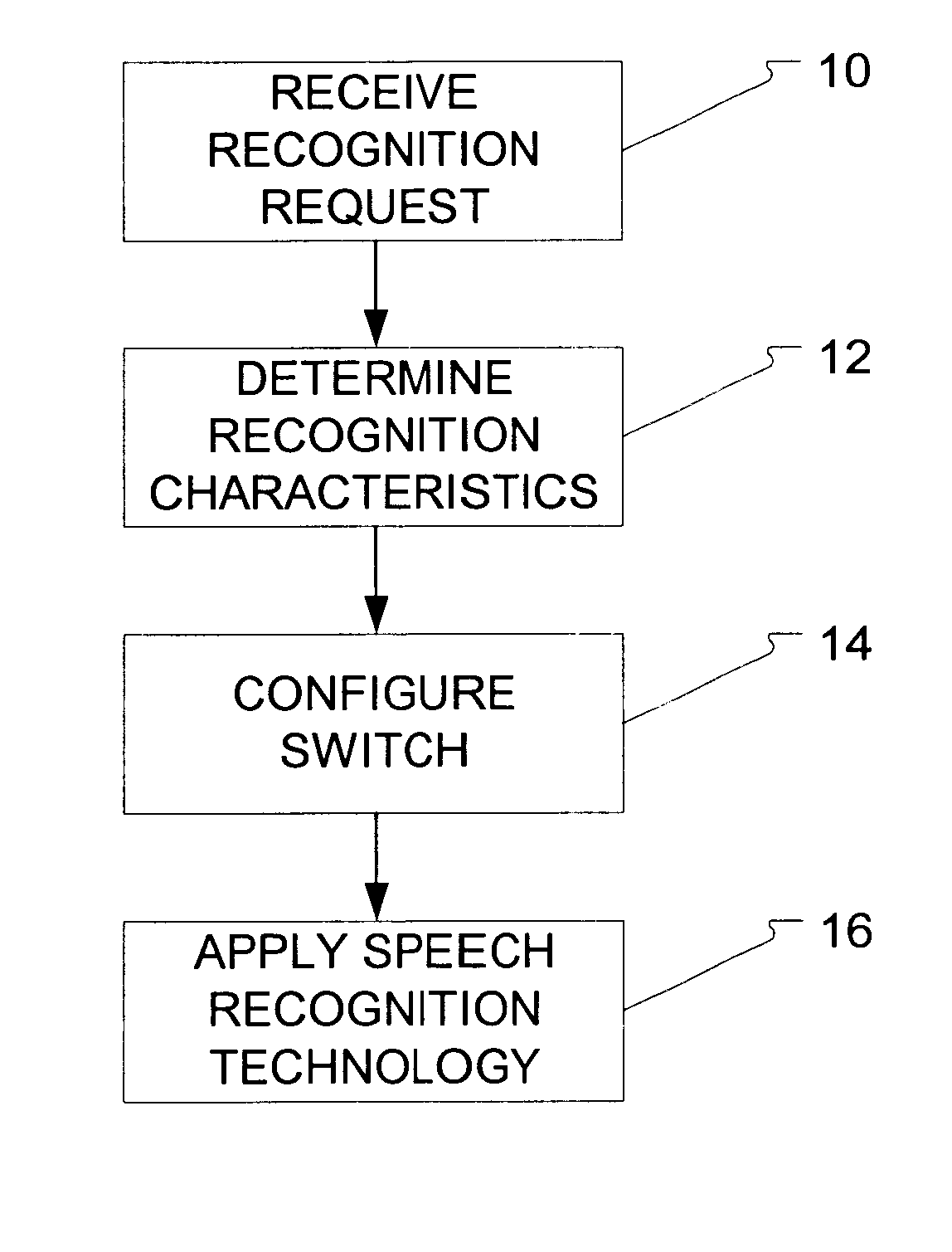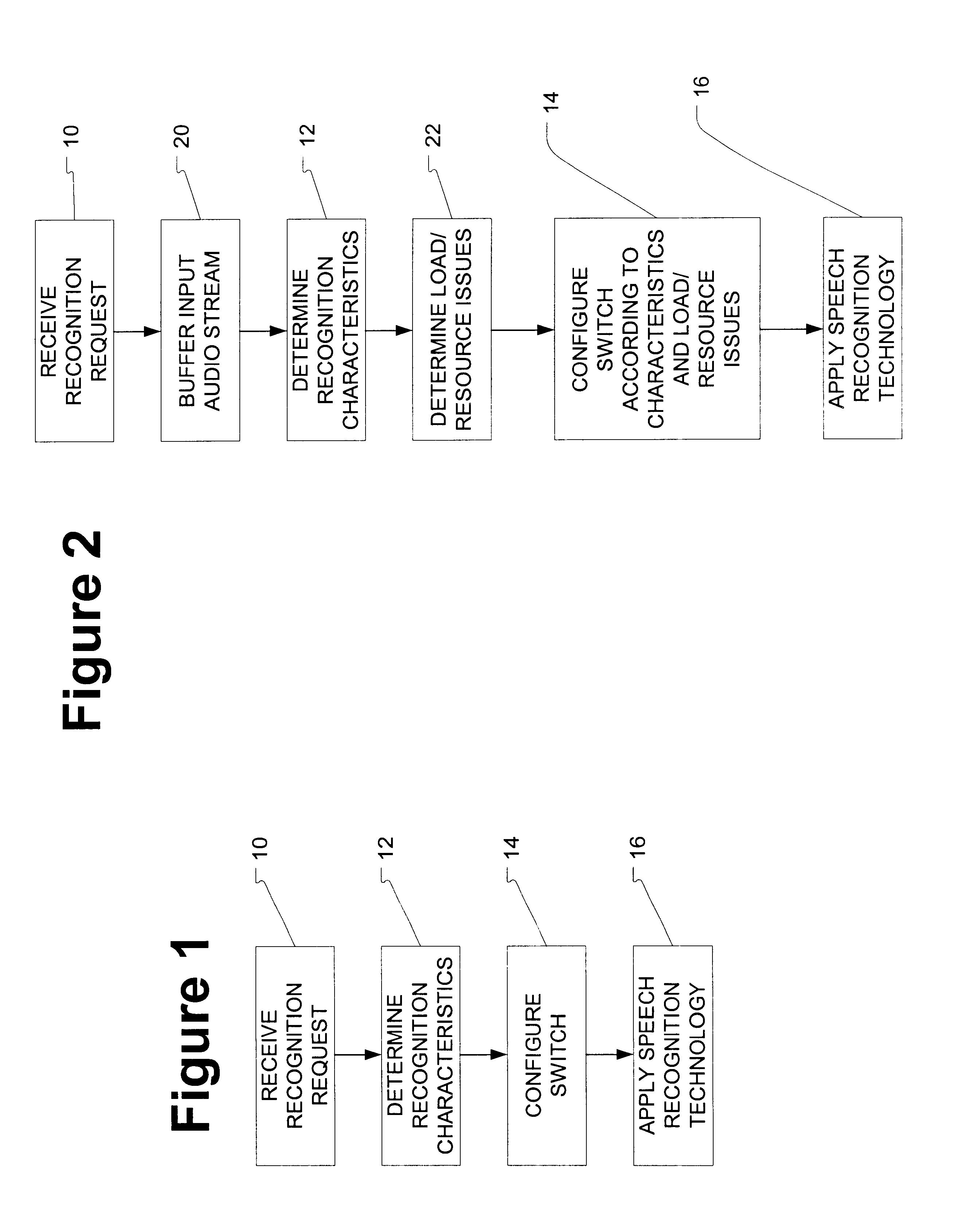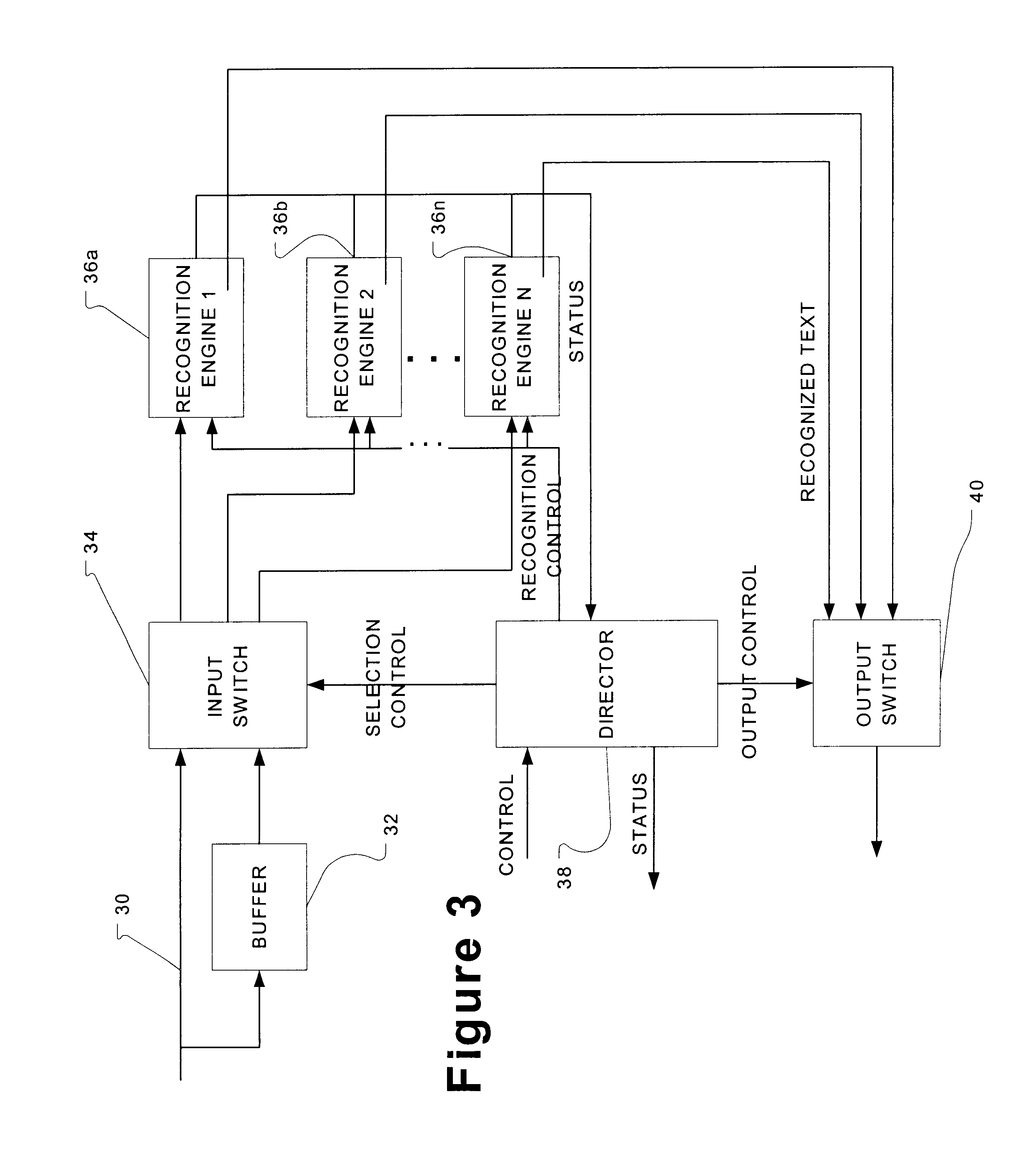Method for automatically and dynamically switching between speech technologies
a technology of speech recognition and switching between technologies, applied in the field of speech recognition technology, can solve the problems of unneeded features, system bogging down, and dictation, and achieve the desired accuracy with the lower capability technology, and achieve the effect of reducing the number of speech recognition tasks
- Summary
- Abstract
- Description
- Claims
- Application Information
AI Technical Summary
Benefits of technology
Problems solved by technology
Method used
Image
Examples
Embodiment Construction
As speech recognition systems and technologies evolve, demand for more tailored speech systems will increase. Complex speech systems often perform numerous tasks with differing capability and performance requirements. For example, a first user may only require simple voice mail retrieval, a task with very low capability requirements as the user will only need recognition of numerical choices from predefined menus. At the same time, a second user may want to dictate an e-mail using the speech system. These are two tasks that must be handled by the same speech system.
Currently, most speech systems use one type of speech recognition technology. This can result in a mismatch between the desired performance and cost and the actual performance and cost. Systems may be low cost but not have the higher level of capabilities and performance desired for some tasks. Alternatively, the system may have higher capabilities and performance than desired for some tasks, and will be less cost-effecti...
PUM
 Login to View More
Login to View More Abstract
Description
Claims
Application Information
 Login to View More
Login to View More - R&D
- Intellectual Property
- Life Sciences
- Materials
- Tech Scout
- Unparalleled Data Quality
- Higher Quality Content
- 60% Fewer Hallucinations
Browse by: Latest US Patents, China's latest patents, Technical Efficacy Thesaurus, Application Domain, Technology Topic, Popular Technical Reports.
© 2025 PatSnap. All rights reserved.Legal|Privacy policy|Modern Slavery Act Transparency Statement|Sitemap|About US| Contact US: help@patsnap.com



